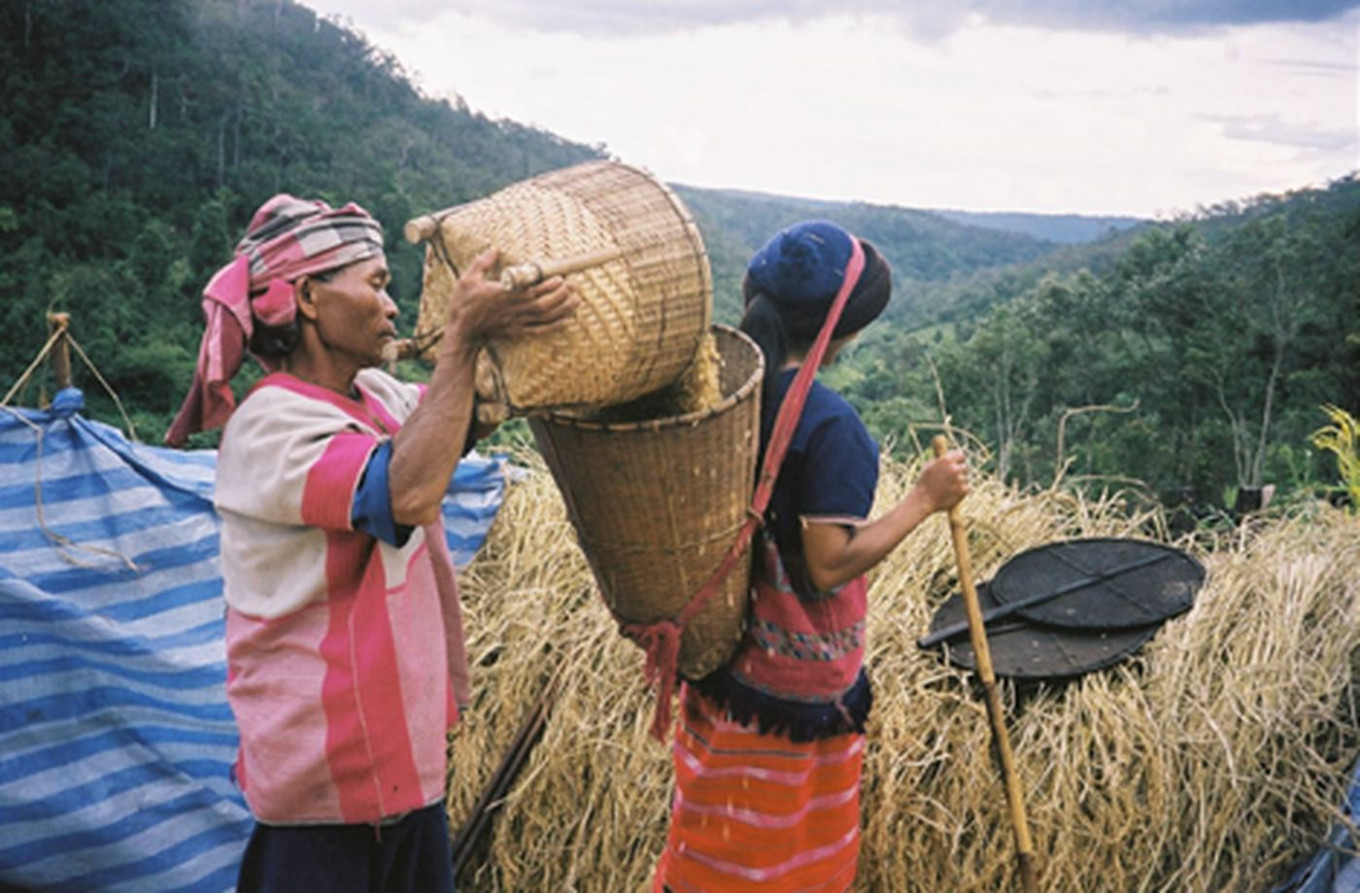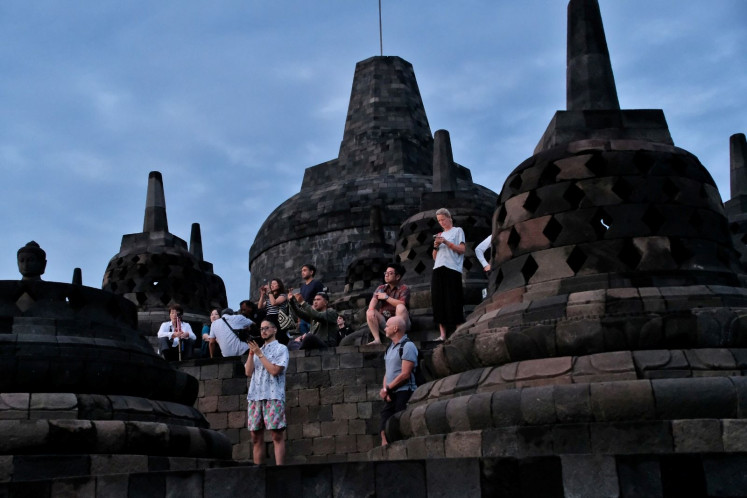Popular Reads
Top Results
Can't find what you're looking for?
View all search resultsPopular Reads
Top Results
Can't find what you're looking for?
View all search resultsSustainability in action: the Karen peoples' farming system
By having a seven to ten-year farming system, the Karen people in Thailand show how to create a sustainable environment and help the climate.
Change text size
Gift Premium Articles
to Anyone
F
or 2000 years the Karen people in northern Thailand have practised a form of long term rotational farming that allows the land to recover then thrive, ready for the next harvest.
This practice lies at the heart of the way the people of the Hin Lad Nai community in the hills of Chiang-rai province manage natural resources. The philosophy of sustainable management is captured in a poem that says, “Auf hti K’tau hti, auf kauj k’ tauz kauj, auf deif k’ tauz lei, auf nyaf k’ tauz kwiv “ (use water care of rivers, use land care of forest, use/eat frogs care of cliff and use/eat fishes care of water sources).
The system of fallow, or 'rational farming cycle', allows an area to regenerate for 7-10 years, then the farmers cultivate it again for one year. After harvesting, they let the field become fallow again for another 7-10 years while it regenerates.
This rotational farming system contributes to lower carbon emissions. Allowing 236 hectares of fields to lie fallow for up to 10 years stores 17,348 tonnes of carbon. The burning of rotation fields releases just 476 tonnes of carbon dioxide. Rotational farming helps maintain the balance of the ecosystem and reduces greenhouse gas emissions, helping tackle climate change.
The stumps of trees cut back to allow planting crops don’t die but come back with small branches sprouting around the stump. The roots will not dry. They maintain the structure of the ground in the field, which means a lower risk of erosion and landslides. Old stumps create a new generation of healthy trees quickly. This is the main reason why Karen rotational farmers keep the stumps long when they slash the trees.
Around 37 species of trees sprout. New grass also grows. Each stump gives rise to up to five outgrowth trees, growing in clumps. Around nine species of plants grow from seed. In the first year, trees reach around 170cm; the trunk is about the same size as a human thumb.
In the first and second year of fallow, grass and new shoots of trees appear, providing food and shelter for animals. The fields provide very good young grass for domestic animals, such as buffalo. The animals graze these areas until the following period of the fallow. In the second year, poultry and insect-eating birds are present. Up to 21 kinds of mammals appear, attracted by the plentiful food such as taro, yam, chilli, egg plants, rattan shoot, sweet potatoes, fern bunch, cassava, lemon grass, ginger and galangal, which are either sown or appear naturally.
The third and fourth year are called young trees fallow (bush fallow). Taller trees shade the grass, causing it to slowly decline. At the same time, vines appear along with clumps of bamboo and rattan. The number of tree species increases to around 50. Different tree species, rhizome/rootstock species and vines grow sparsely, while mushrooms grow over old logs and under the trees. Bamboo shoots, rattan shoots, sedges, flags, orchids, hemp, and herbs grow and can be harvested by villagers. There are also an increasing number of vines that can be used as herbal medicines.
There are around 23 species of mammal in the third- and fourth-year fallows Karen call Doo yauv ploj (young tree fallow). There are plenty of vines among the young trees which makes an attractive habitat for rodents, which make up about half the mammals living in the area. Larger animals such as wild boar and barking deer come and stay during this period. There is more space as the grass dies off because of increased shade from the growing trees. Around 19 species of poultry are found, many in the morning. In the fourth-year bigger poultry are found, particularly in the evening. The birds are attracted by the denser tree cover which make it better for roosting. Trees also begin fruiting which provides food.
The fifth-and sixth year is known as Doo loov htauf (fallow stand-up ) as the trees grow taller. In the seventh to ten years the Karen call the fallow ground doo lax (land for use /older fallow), implying that if the field is good enough, it is ready to be used for farming again. By now the soil has become rich again and the trees are healthy, with lush growth.
The final year is important as a food source for villagers who harvest a variety of shoots (rattan, bamboo, palm and taj duf hse, a special sweet palm) and mushrooms. Hunting is easier with squirrels, rats, palm civets, barking deer, wild boar and duck on the menu. The more mature trees can also be used for construction and heating.
Rotating the fallow means the area is not only used for farming but also becomes a food centre for animals and humans. Through this natural process, the balance of nature is maintained. Humans, animals and plant life co-exist to sustain life.
---
The writer is the Director of Pgakenyaw (Karen) for Sustainable Development (PASD), and Advisor Board Committee of Asia Indigenous People Pact Foundation (AIPP). He is a specialist of Indigenous Study in Thailand and SEA. He received funding from SWED BIO, Stockholm Resilience Center, SIDA, SWEDEN.
Originally published under Creative Commons by 360info™.











